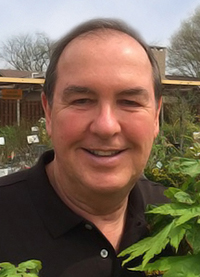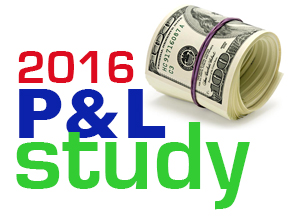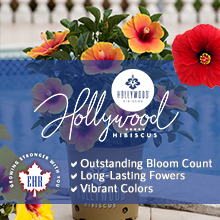The 2016 Profit & Loss Study – Revenues and Expenses
Revenues and Expenses by Steve Bailey
The basic function of any Profit & Loss Statement is to measure the performance of an entity, in the form of Profitable or not. But most P&L’s are not exactly like the one you find in The Group’s Profit & Loss Study. In most cases, the P&L your CPA or tax reporter gives you is geared toward tax reporting, and not business management. The Group’s Profit & Loss Study measures Operating Profitability, allowing a direct comparison to other garden centers in a like mode of operation and/or size. Better yet, it allows your center to compare your numbers with all of the centers that reported as well as the Best Practices/High Achiever group.
Let’s begin with the basic Profit & Loss section, which encompasses all of the incoming money in the form of Revenues and the expenses going out in the form of Cost of Goods Sold, Operating Expenses, and Wage & Wage Benefits.
Revenues: While increasing Revenues is not my particular area of expertise, the information contained in this section will go a long way towards potential Profit. Revenues for all twenty-four Group categories and seven subcategories are calculated as a percentage of Total Revenues. The interesting part of this analysis, as we proceed down the Study, is that some categories have the potential to contribute more Margin Dollars and hopefully more Profit, while others are lower Margin categories that are difficult to force into high Margin territory. Thus, how you align your Revenue/Product mix can be a direct indicator of your potential Profitability, or lack thereof. Even though my main focus is not in the area of increasing Revenues, increasing Profitability through a realignment of what you should sell vs. what you want to sell is. Improved Profit is the destination.
Cost of Goods Sold: The next area, Cost of Goods Sold, is the most important expense area of a garden center’s P&L. Number one reason is it’s the largest. Number two reason is it is the basis for all of the business management ratios we find in the Addendum at the bottom of the Study. Measured as Beginning Inventory + Purchases – Ending Inventory, the resultant category Cost of Goods Sold divided by category Revenues is the percentage of the Revenues used to buy that inventory. No one category is exactly like another, so measuring and managing each is the key to business success.
Operating Expenses: I always describe Operating Expenses as occupying the largest piece of real estate in the P&L, but also the smallest expense percentage vs. Total Revenues. That doesn’t mean you should gloss over this section, however, as a tenth or two of a percent on several line items can add up to two or three percent more Profit. Even minor actions can reap big rewards.
Wage and Wage Benefits are the second largest expense, just below Cost of Goods Sold and just higher than Operating Expenses. Encompassing all expenses attributable to Staff and Owners including monetary compensation, payroll taxes paid by the business, benefits, and other people-related expenses, it’s critical this percentage be as low as possible while still allowing a respectable pay to both Staff and Owners. That’s tough to balance, but comparative percentages to other groups as well as efficiency measurements further down in the Study should give you a good indication of where your garden center stands.
Goals Set: In all of the expense measurements above, your center’s reported percentage was indicated as well as a goal percentage. All centers that indicated a Retail mode of operation are held to the same standards, while Retailer/Growers goals were specifically calculated relative to their amount of grown product retailed through their store.
Rent and Owner’s Compensation: One other mention – all centers are expected to pay a relative amount of Rent and Owner’s Compensation. This is just good business practice, not over-paying the Owners. On the contrary, most do not pay themselves a respectable amount in either expense, so the P&L Study forces them to through an adjustment in both sections. Knowing the realistic percentage is many times an eye-opener.
Profit? We’ll discuss that in the next P&L Study GROUPTalks article. In the meantime, get out there and sell. But make sure you are measuring your efforts in an accountable way so you can report to the P&L Study next year.
Please remember – if your center reported to the 2016 P&L Study, send me an email or give me a call and let’s set up a time to review your report in a private, free one-hour phone consultation. Seventeen garden centers have already met with me, and I would like to talk with all seventy-eight. Give me a call – today!
Steve

Email: CLICK HERE
Steve Bailey is a service provider for The Garden Center Group and manages all Group financial sharing programs. The Weekly Department Review (WDR) and The Annual P&L Study are exclusives to The Garden Center Group and are included in your retainer!
REMEMBER: Your interaction (by phone and email) with Group Service Providers such as Steve Bailey, Robert Hendrickson, Sid Raisch and Jean Seawright, are included in your retainer! So what are you waiting for? Take advantage of all that The Group has to offer and give them a call or send an email now!


